The route of La Vuelta a España 2023 has been revealed
Finally, the route of the Vuelta a España has been revealed, the last of the big ones that had not yet been presented and that proposes an interesting route that, in some aspects, breaks with some of the usual mantras of the race and that are usually criticized by many cycling fans. Tourmalet and Angliru should be the judges of the race if some of the many traps hidden in the route do not give us a surprise.
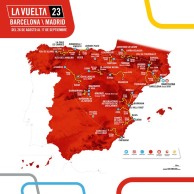
Terrain for climbers in La Vuelta 2023
After many weeks with more or less accurate leaks, stage starts and finishes that were being revealed relatively officially and months after knowing the routes of the Giro d'Italia and Tour de France, La Vuelta a España 2023 has been presented with an event held at the Palau de la Música in Barcelona, the city that will host, as was already known, the grand departure of the Spanish big cycling event.
There are several very pleasant surprises that promise a Vuelta a España 2023 that can give a lot of play as far as spectacle is concerned.
RECOMENDADO

What bike size do you need? Here's how to find out

How does age affect performance and recovery?

10 tips for safer and faster downhills on road bikes
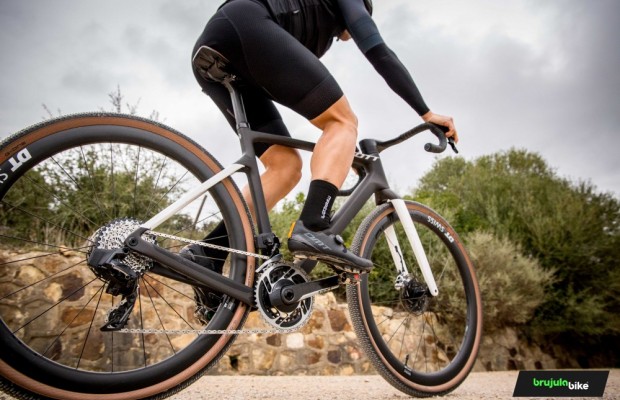
The best gravel groupsets of the moment

How to lose body fat? Differences between losing weight and losing fat

Profile wheels: advantages, disadvantages and which ones are better

The first week starts with a team time trial through the streets of Barcelona. A little less than 15 kilometers with no major difficulty other than being held in urban terrain and that should not throw excessive differences in the classification. It will be followed by a stage through the usual terrain of many cyclists in the metropolitan area of Barcelona, which will lead the peloton towards Mataró and should produce the first mass finish.
In the 3rd stage comes the first surprise of the race. The Vuelta 2023 will not hesitate to head towards Andorra to offer us the first of its 10 summit finishes in the Arinsal sector of the Vallnord ski resort. An interesting climb that, in addition, is preceded by the Coll de Ordino, so from the beginning we could start to see some differences between the favorites.

The Vuelta will complete its tour of Catalonia heading towards Tarragona in a stage through uncomfortable terrain, without too many complications and which, after the mountainous day of the previous stage, is very likely to be fertile ground for breakaways.
From here, the race heads south in a stage that connects Morella with Burriana, where a massive finish can be expected.

The tranquility will not last long in La Vuelta because, the next day, there will be another summit finish, recovering a stage very similar to the one won a few years ago by Ángel Madrazo with a finish in the ski resort of Javalambre, which gave us a nice day in the breakaway, although it is expected that it will not have consequences for the general classification.
As with the previous summit finish, it will be followed by a completely flat day on the way to the Valencian town of Oliva, prior to the third summit finish, another classic of La Vuelta a España as is the Xorret de Catí, which this time will be preceded by an attractive route, with the climbs to Vall d'Ebo, the wall of Tollos, as well as two very hard and fast mountain passes such as Benifallim and La Carrasqueta. A day only suitable for a breakaway on a terrain well known among the professionals for being the location of their winter rallies.
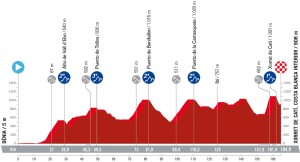
If we thought that 3 summit finishes were enough for the first week, we still have one more, this unprecedented one in the Murcian town of Caravaca de la Cruz. After this, the cyclists will have more than earned the rest day, which the race will use to move to the heart of Castilla.
And the event will start again with the only individual time trial of the race, just 25 kilometers through the streets of Valladolid. A clear difference between the individual fight and the mountains in a trend that has also been applied in the Tour de France.
With the fatigue that a time trial always causes in the legs, the next day the cyclists will face a new summit finish, this time on the way to the Laguna Negra de Urbión, which we could hardly see a few years ago when it made its debut in the race due to the unfortunate weather that accompanied that day. A stage with a short and explosive finish that should not make any difference between the favorites, especially if we take into account that it is the only difficulty of the day.

The next day is even flatter, between the Soria town of Ólvega and Zaragoza, a stage without any difficulty, although due to the direction in which the race will circulate that day, if the Cierzo decides to make its appearance on the route through the Ebro valley it would hit the peloton in favor and from the side.
With this background we face the first mountainous block of entity that the race will have and that presents us with a group of stages that should begin to clarify the classification.

The first of them recovers the stage with the Tourmalet finish that the pandemic deprived us of in 2020. It starts in a town with reminiscences of cycling show as Formigal, beginning, with the ascent to the last kilometers of the Portalet. After its very long downhill, and with hardly a meter of transition, begins the ascent to the mythical Aubisque by its hardest face and the link with the short slope that is the Soulor on this side.
From here, descending by its main route, the peloton will reach the town of Argelès-Gazost, to head, contrary to what had been leaked in previous days, towards Luz Saint-Sauveur to climb the legendary Tourmalet by its most constant and toughest face, the same that the Tour de France has used in the two occasions in which the stages have concluded at the top of this colossus. If we have to mention one drawback to this stage, it is its length, just 134 kilometers.
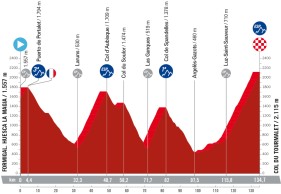
It will be followed by another even tougher day, which is a pleasant surprise in a region that has been rather neglected by both the Tour and La Vuelta, but which has traditionally provided us with days to remember. The stage concentrates its hardness in the middle part, with the hard climb to Issarbe, named in the profile as Hourcére, which will be followed, with hardly any transition terrain, by another of the great giants of the Pyrenees as is the Larrau, the port that defeated Miguel Indurain, who precisely, in the company of Perico Delgado, showed us the recognition of the stage on the bike during the presentation.
It doesn't end there because, after returning to Navarre, there is still the short pass of Laza to enter the Roncal valley before facing the finish in Belagua, or what is the same, the Spanish side of the Piedra de San Martín. A pass without excessive difficulty, but with the maximum hardness concentrated in the intermediate part, it can make us see a spectacle from afar, being this, in our opinion, the Queen Stage of La Vuelta 2023.
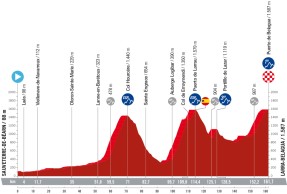
Only one stage will remain to reach the second rest day, this time through Navarre between Pamplona and Lekunberri, which, after the wear and tear of the previous two days, will be favorable for a quality breakaway thanks to its mid-mountain terrain, with a double final passage through the Zuarrarrate pass.
Although it is quite possible that we will reach the third week with the race fairly well defined, there will still be some ground to try to change the dynamics of La Vuelta 2023.
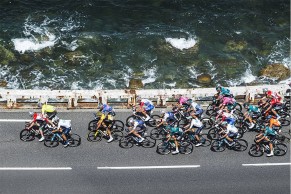
The week begins with a route through Cantabria on the way to Bejes, at the very gates of the Picos de Europa. Despite being a summit finish, it is the only difficulty of the route and should hardly produce differences between the favorites who will try to save their strength for the next day in which the race will reach another of the myths of La Vuelta, the Angliru.
The Asturian colossus will be reached after a short stage of just 122 kilometers with the previous passes through the Colladiella and the Cordal as a preview to the inhuman ramps of the Angliru. Despite the spectacular nature of this climb, the reality is that it has rarely been decisive for the classification, so what we will surely see, unless there is a surprise in the form of a crash, will be a greater resolution of the positions in the general classification.
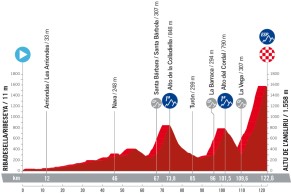
The second Asturian day, which will feature the unprecedented ascent to La Cruz de Linares, will be even more challenging. As a warm-up to the final circuit in which this climb will be tackled twice, the cyclists will have to overcome three other passes, among them one of the hardest in Asturias, San Lorenzo, which, placed in the middle of the stage, may provide a unique opportunity for those who are in a position to take the overall lead to try to turn the race around.
After this stage, there are only three days left to go. A completely flat one that will cross Castilla between La Bañeza and Íscar. Another with the usual finish with the Sierra de Guadarrama as a venue and where there will be a tribute to the disappeared Vuelta a los Puertos, a race that surely those who followed cycling in the 80s and 90s remember with affection.
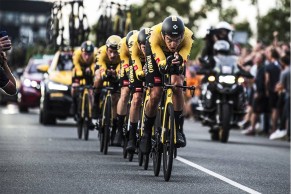
The route designed to close La Vuelta 2023 is surprising, with a route that avoids the traditional mountain passes and opts for a mid-mountain course, close to what is known as Sierra Oeste, bordering the province of Ávila.
In the surroundings of San Lorenzo del Escorial the peloton will ride twice a hard circuit in which they will ascend the mountain passes of La Escondida, a beautiful climb on a paved forest track through a nice pine forest; Santa María de la Alameda, the second highest village in the Community of Madrid after Somosierra; and Robledondo from where they will descend again to the Cruz Verde.

From there the cyclists will again face the Cruz Verde, but this time by a different side than usual, again a beautiful forest road in what is one of the favorite climbs of the Madrid cyclists. From there they will return to El Escorial from where they will climb the so-called Alto de San Lorenzo del Escorial which, in the absence of more precise information about the route and knowing the precedents of La Vuelta, makes us suppose that it will be one of the very hard roads that climb the slope of Monte Abantos.
A day with a steep terrain suitable for the kind of enclosures that two editions ago expelled Superman Lopez from the podium in that memorable day in Galicia, and which also has the added attraction of being the only one that exceeds 200 kilometers, just one day before finishing in the traditional circuit through the streets of Madrid.

A Vuelta of irregular course but with some really spectacular days that should offer us a great spectacle.
What do you think about the design of La Vuelta a España 2023? Who is your favorite to win? Tell us about it in our social networks!